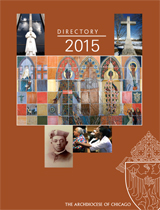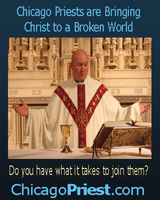May 11, 2008
Ministering within a culture not your own
Churches in the archdiocese are no strangers to cultural diversity.
But that doesn’t make it any easier for people of different cultures to understand one another, to welcome one another and to offer the pastoral services parishioners need.
Precious Blood Father Robert Schreiter explored the difficulties of “Ministering in a Culture Not Your Own” in an April 29 presentation at Sacred Heart Parish in Palos Hills. The presentation was hosted by Centro Espiritu Santo, a formation center of the Archdiocese of Chicago in Vicariate V that works to improve leadership formation for Hispanic ministry.
“There is no clear answer on this,” Schreiter said.
The key, Schreiter said, is for members of all groups to work toward understanding other cultures so they can move toward a state of “engaged multiculturalism.”
That state falls between the poles of assimilation, in which a community of newcomers sheds their own characteristics to blend with the dominant culture, perhaps keeping only “food and holidays,” Schreiter said, and multiculturalism, which tends to lead to parallel parish structures with little interaction.
For all cultural groups to learn from one another, all of them are going to have to engage in some give-and-take, and all are going to have to a learn something about the other culture.
And the things that they must learn aren’t necessarily the names of holidays or the recipes for their national dishes. It’s more the unwritten assumptions, such as whether the individual or the group is more important, or whether it’s more rude to start a meeting late or to start a meeting without giving everyone present the opportunity to greet everyone else.
Give and take
Many parishes adopt what they see as an “inclusive” model, in which English predominates and the newcomers don’t necessarily feel very included. Even so, the dominant community often resents what they feel they have given up.
Others have a “community of communities,” in which each cultural group has its own organizations and parish institutions.
“Oftentimes, the only place they come together is the parish pastoral council,” he said. “If they do come together at the parish council, often the parish council isn’t able to function.”
Rather, “turf wars” develop, over issues such as who gets the favorite Mass times, or whether to emphasize the celebration of Our Lady of Guadalupe or the Solemnity of the Immaculate Conception more.
Hope for future
The ideal, Schreiter said, is the “integrated parish” with strong contact between the communities and good intercultural skills on all sides. “This is more the hope for the future than the reality on the ground,” he said.
The first step, he suggested, was to teach intercultural skills to parish staff first, and then to community leaders on all sides.
Expect to face difficulty around issues such as language — both between the dominant cultural group and the new group, and between different generations of the new group.
Those intergenerational tensions will persist in other areas, too, Schreiter said. Often, immigrants will become more active in their churches than they were in their home countries, because the church is a tie to home. But their children, wanting to become more American, drift away for the same reason.
 Catholic
New World - Newspaper for the Archdiocese of Chicago
Catholic
New World - Newspaper for the Archdiocese of Chicago Archdiocese of Chicago Directory
Archdiocese of Chicago Directory Oficjalne wydawnictwo Archidiecezji Chicago w języku polskim
Oficjalne wydawnictwo Archidiecezji Chicago w języku polskim